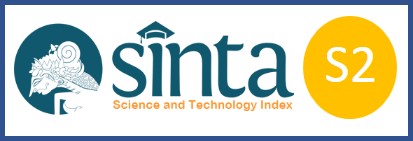The Effect of Innovation and Technology Towards Economic Growth in Asia
Downloads
This study aims to find out the effects of innovation and technology on economic growth in Asian countries in 2000-2017, and to analyse the different impacts perceived in upper-middle-income countries and lower- middle-income countries in Asia. This study uses data published by the World Bank and WIPO (World Intellectual Property Organization) and uses panel data regression. Patent applications have significant effects on economic growth, both in upper and lower middle-income countries. meanwhile, R&D expenditure has an insignificant effect on economic growth in both clusters. Moreover, estimation results from three other independent variables: FDI, export, and labour show that these three variables have a significant effect on the real GDP of 18 Asian Countries in 2000 - 2017. The results of his study indicate that there is no significant difference of the effects of innovation and technology toward economic growth between upper-middle-income countries and lower-middle-income countries.
Achchuthan, S. (2013). Export, Import and Economic Growth: Evidence from Sri Lanka. Journal of Economics and Sustainable Development, 4(9), 147-155.
Agung, I. G., Pasay, N. A., & Sugiharso. (2008). Teori Ekonomi Mikro: Suatu Analisis Produksi Terapan. Jakarta: PT. Raja Grafindo Persada
Adak, Mehmet. (2015). Technological Progress, Innovation and Economic Growth; the Case of Turkey. Social and Behavioral Sciences 195, 776 –782.
Azhar Aziz, H., Laili, N., & Prihantono, G. (2016). the Impact of Fiscal Policy Impact on Income Inequality and Economic Growth: a Case Study of District/City in Java. Journal of Indonesian Applied Economics, 6(2), 229–244. https://doi.org/10.21776/ub.jiae.2016.006.02.6
Blanchard, O., dan Johnson, D. (2013). Macroeconomics. Pearson Education, Inc., England.
Dornbusch, Rudiger dan Stanley Fischer. (2004). Macroeconomics. McGraw-Hill., New York.
Gujarati, Damodar. (2013). Essential of Econometrics. McGraw-Hill. Inc. Second Edition, London.
Hasan, I., & Tucci, C. L. (2010). The innovation-economic growth nexus: Global evidence. Research Policy, 39(10), 1264–1276. https://doi.org/ 10.1016/j.respol.2010.07.005.
Inekwe, J. N. (2014). The Contribution of R&D Expenditure to Economic Growth in Developing Economies. Social Indicators Research, 124(3), 727–745.https://doi.org/10.1007/s11205-014- 0807-3.
Jajri, I., dan Ismail, R. (2010). Impact of labour Quality on Labour Productivity and Economic Growth. African Journal of Business Management, 4(4), 468-495.
Johnson, Andreas. (2006). The Effects of FDI Inflows on Host Country Economic Growth. Centre of Excellence for studies in Science and Innovation No. 58. The Royal Institute of technology.
Kustituanto, B. & Istikomah. (1999). Peranan Penanaman Modal Asing (PMA) terhadap Pertumbuhan Ekonomi Di Indonesia. Journal of Indonesian Economy and Business, 14(2).
LeBel, P. (2008). The role of creative innovation in economic growth: Some international comparisons. Journal of Asian Economics, 19, 334–347.
Mankiw, N. G. (2010). Macroeconomics 7th. In Worth Publishers.
Mao, W., & Koo, W. W. (1997). Productivity growth, technological progress, and efficiency change in chinese agriculture after rural economic reforms: A DEA approach. China Economic Review, 8(2), 157–174.
Nicholson, W. C. M. S. (2008). Microeconomic Theory_ Basic Principles and Extensions, 10th Edition. Thomson South-Western.
Nicol, D dan J Nielsen. (2001). ‘The Australian Medical Biotechnology Industry and Access to Intellectual Property: Issues for Patent Law Development' (2001) 23 Sydney Law Review 347, 362–363.
Pasay N, (1991). Perkembangan Teori Produktivitas Hingga Kini: Suatu Persilangan Antara Teori Dan Empiris. Jakarta: Lembaga Penerbit FEUI.
Pece, Andreea Maria, Olivera Ecaterina Oros Simona, dan Florina Salisteanu. (2015). Innovation and economic growth: An empirical analysis for CEE countries. Economics and Finance. 26,461 – 467
Pegkas, P. (2015). The impact of FDI on economic growth in Eurozone countries. Journal of Economic Asymmetries, 12(2), 124–132.https://doi.org/10.1016/j.jeca.2015.05.00 1
Rainer Klump, Peter McAdam, dan Alpo Williams, "The Normalized CES Production Function, Theory and Empirics”, Working Paper Series, European Central Bank, No. 1294/ February 2011. Hal. 12
Rohwer, Jim. (1995). Asia Rising: Why America Will Prosper as Asia's Economies Boom. New York: Simon & Schuster.
Romer, David. (2012). Advanced Macroeconomics. New York : McGraw- Hill/Irwin,
Saini, A.K. dan Surabhi Jain. (2011). The Impact of Patent Applications Filed on Sustainable Development of Selected Asian Countries. BVICAM's International. Journal of Information Technology (BIJIT), 3(2), 358-364. New Delhi.
Sukirno, Sadono. (2008). Makro Ekonomi, Teori Pengantar. Jakarta: Penerbit PT. Raja Grafindo Persada.
Sweet, Cassandra dan Dalibor Eterovic. (2019). Do patent rights matter? 40 years of innovation, complexity and productivity. World Development. 115, 78-93.
Todaro, M. P. & Smith, S. C. (2011). Economic Development, (11th ed.). Essex: Pearson Education.
Van Den Berg, Hendrik. (2005). Economic Growth and Development. International Edition. New York: McGraw Hill.
Wang, Chao-Hung. (2011). Clarifying the Effects of R&D on Performance: Evidence from the High Technology Industries. Asia Pacific Management Review 16(1), 51-64.
Yang, Chih-Hai. (2006). Is innovation the story of Taiwan's economic growth?. Journal of Asian Economics. 17, 867–878.
Copyright (c) 2020 Dhanu Kusumawardhana

This work is licensed under a Creative Commons Attribution-ShareAlike 4.0 International License.
JIET (Jurnal Ilmu Ekonomi Terapan) (p-ISSN: 2541-1470; e-ISSN: 2528-1879) is licensed under a Creative Commons Attribution-ShareAlike 4.0 International License
Authors who publish with JIET (Jurnal Ilmu Ekonomi Terapan) agree to the following terms:
- The journal allows the author to hold the copyright of the article without restrictions.
- The journal allows the author(s) to retain publishing rights without restrictions
- The legal formal aspect of journal publication accessibility refers to Creative Commons Attribution ShareAlike 4.0 International License (CC BY-SA).












